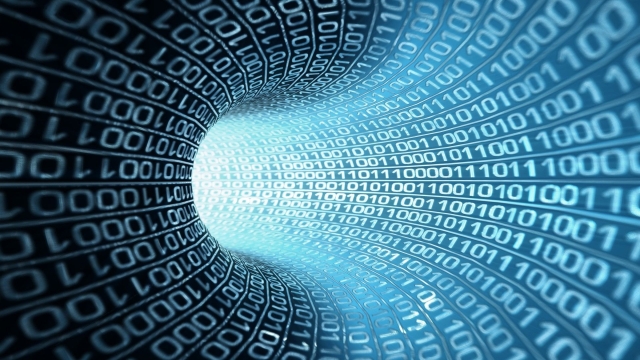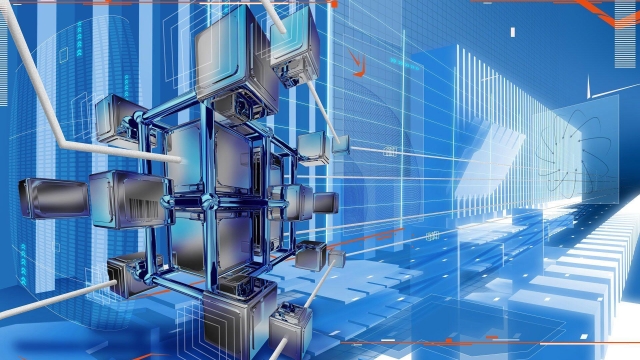![]()
Deepfake technology has come a long way since its inception, captivating both creators and consumers with its remarkable capabilities. With the power to manipulate and generate hyper-realistic videos and images, deepfakes have surged in popularity, raising concerns about their ethical implications and potential misuse. This article delves into the heart of deepfake technology, aiming to shed light on its inner workings, the challenges it presents, and the need for heightened awareness in the age of digital deception.
At its core, deepfake technology utilizes artificial intelligence algorithms to seamlessly graft one person’s likeness onto another’s in a video or image. While initially driven by entertainment and creative purposes, deepfakes have far-reaching ramifications extending beyond the surface level. As the technology continues to advance, it poses significant threats to security, privacy, and trust in an increasingly digital world. Understanding the intricacies of deepfakes is thus essential in order to safeguard ourselves against the potential harm they can inflict.
From political propaganda to identity theft, the potential misuse of deepfake technology is a growing concern. The ability to convincingly manipulate videos and images carries profound implications for public figures, elections, and the propagation of false information. As deepfakes become more sophisticated and readily accessible, it becomes increasingly challenging to discern the line between reality and fiction. This article seeks to navigate the complexities surrounding deepfakes, exploring the underlying technology, the risks it presents, and the steps we can take as individuals and society to mitigate its harmful effects.
Understanding Deepfake Technology
Deepfake technology is a form of artificial intelligence that has gained widespread attention in recent years. It involves the creation of highly realistic and often deceptive synthetic media, such as images, videos, and audio, by using deep learning algorithms. With this technology, it has become possible to manipulate and superimpose someone’s face onto another person’s body convincingly, making it appear as if the person in the manipulated content is actually saying or doing things they never did.
To understand how deepfake technology works, it is essential to explore the underlying process. Initially, a deep learning model is trained on a large dataset of images or videos of the target person’s face. Through this training, the model is able to learn the unique facial features, expressions, and movements of the target individual. Once the training is complete, the model can generate new facial expressions and movements on its own, based on what it learned during the training phase.
To create a deepfake video, the trained deep learning model then needs to be provided with a source video, which will serve as the template. The model analyzes the movements and facial expressions in the source video and synthesizes the target person’s face onto the existing footage. The result is a manipulated video that appears convincingly real.
The implications of deepfake technology are far-reaching. While it has potential applications in entertainment and visual effects industries, its misuse poses significant concerns. Deepfakes can be used to spread disinformation, manipulate public opinion, or defame individuals by making them appear to say or do things they never did. As this technology continues to evolve, it becomes increasingly important to develop robust detection methods to identify deepfakes and mitigate the potential harm they can cause.
The Impact of Deepfakes on Society
Face Swap
Deepfake technology has increasingly become a concern in today’s society. Its implications have raised serious questions about the authenticity of digital content and the potential risks it poses. The ability to manipulate videos and images to make them appear genuine has brought up various ethical, social, and legal concerns.
One of the significant impacts of deepfakes is the erosion of trust in our increasingly digital world. With the rise of social media and online platforms, it has become easier to spread misinformation and propaganda disguised as real news. Deepfakes provide a powerful tool for malicious actors to deceive and manipulate public opinion, exacerbating the already existing issue of fake news.
Furthermore, the rise of deepfake technology poses a threat to privacy and consent. The ability to superimpose someone’s face onto another person’s body in explicit or compromising situations can have severe consequences for individuals. Victims of deepfake abuse may face reputational damage, emotional distress, and other personal, social, and professional repercussions.
Another concerning aspect is the potential impact on various sectors such as politics, entertainment, and cybersecurity. Deepfakes can be used to fabricate convincing videos of political figures, leading to political unrest or influencing election outcomes. In the entertainment industry, the line between reality and fiction can become blurred, raising questions about the authenticity of performances and the rights of artists.
In conclusion, the advent of deepfake technology has had a profound impact on society. As these manipulated digital contents become increasingly difficult to distinguish from reality, the consequences of deepfakes are far-reaching. It is crucial for individuals, organizations, and policymakers to constantly adapt and develop strategies to detect, combat, and mitigate the risks associated with deepfake technology.
Combating Deepfakes: Current Solutions and Future Challenges
Deepfake technology presents a serious challenge to society, as it has the potential to deceive people and spread misinformation. To tackle this issue, various solutions have been developed, but they come with their own limitations.
One approach to combating deepfakes is through the use of digital forensics. Experts employ advanced techniques to analyze and detect manipulated content. By examining subtle inconsistencies in lighting, shadows, and facial movements, they can identify signs of a deepfake. These forensic tools have been quite successful in detecting certain types of deepfakes, but as the technology advances, so does the sophistication of the forgeries, making them increasingly difficult to detect.
Another strategy involves developing artificial intelligence (AI) algorithms that can distinguish between genuine and manipulated content. By training AI models on large datasets of both real and deepfake videos, researchers are working on creating algorithms that can accurately identify the telltale signs of deepfakes. These systems rely on pattern recognition and data analysis to detect anomalies in facial features, voice, and overall video quality. While promising, these AI-based solutions are still in their nascent stages and require further refinement and improvement.
Looking to the future, one of the biggest challenges in combating deepfakes lies in the speed at which they can be created and disseminated. As technology advances, it is becoming easier for malicious actors to produce convincing deepfakes quickly. This means that detection methods must constantly evolve to keep pace with these advancements. Moreover, efforts must be made to educate the public about the existence of deepfakes and their potential implications. Promoting media literacy and critical thinking can help individuals become more discerning consumers of information and less susceptible to manipulation.
In conclusion, the battle against deepfakes is an ongoing one, and while progress has been made in detecting and combating this technology, there are still significant challenges to overcome. Through the development of advanced forensic techniques, AI algorithms, and increased public awareness, we can work towards a future where the threat of deepfakes is minimized, ensuring a more trustworthy and reliable digital landscape.



